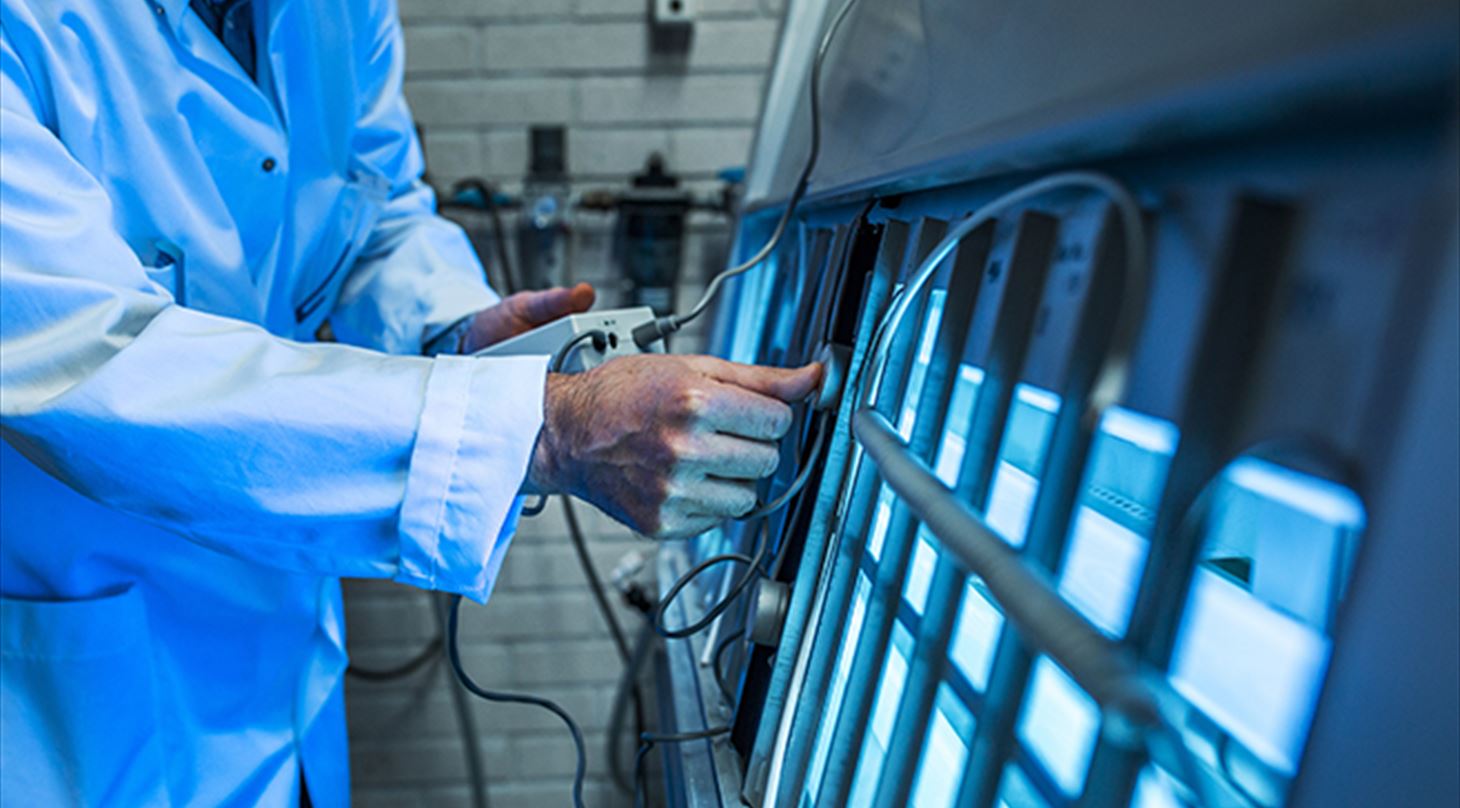
Measurement of light
UV light has enough energy to affect, for example, the production of pharmaceuticals or the working environment, as it can damage the eyes.
At the Danish Technological Institute, we can measure the amount of UV and visible light in your production and at your workplace.
Light is electromagnetic radiation and consists of photons with a specific energy, which depends on their wavelength. Visible light is typically defined as having a wavelength between 400–700 nm.
UV light has a shorter wavelength than visible light, which means it has higher energy. UV light is often divided into three categories with different wavelengths:
- UV-A (315–400 nm)
- UV-B (280–315 nm)
- UV-C (180–280 nm)
What can the Danish Technological Institute help measure?
- We can measure intensity per area as a function of wavelength using a calibrated spectrometer
- We measure energy per area
- We can measure the spectrum from 250 nm to 1000 nm
- We can perform measurements in your production facility
- We can also calculate LUX, taking into account the human eye's perception
- Transparency of materials for light and UV light